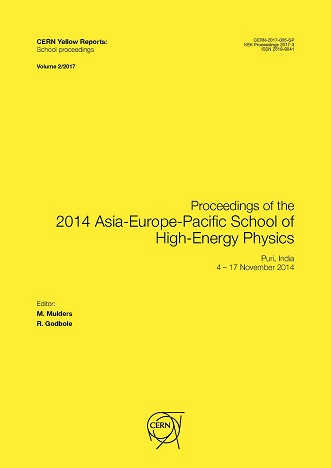Cosmology
DOI:
https://doi.org/10.23730/CYRSP-2017-002.239Keywords:
Lectures, cosmology, cosmological model, baryon asymmetry, dark matter, dark energy, nucleosynthesis.Abstract
Cosmology and particle physics are deeply interrelated. Among the common problems are dark energy, dark matter and baryon asymmetry of the Universe. We discuss these problems in general terms, and concentrate on several particular hypotheses. On the dark matter side, we consider weakly interacting massive particles and axions/axion-like particles as cold dark matter, sterile neutrinos and gravitinos as warm dark matter. On the baryon asymmetry side, we discuss electroweak baryogenesis as a still-viable mechanism. We briefly describe diverse experimental and observational approaches towards checking these hypotheses. We then turn to the earliest cosmology. We give arguments showing that the hot stage was preceded by another epoch at which density perturbations and possibly primordial gravity waves were generated. The best guess here is inflation, which is consistent with everything we know of density perturbations, but there are alternative scenarios. Future measurements of the properties of density perturbations and possible discovery of primordial gravity waves have strong potential in this regard.Downloads
Published
2017-07-25
Issue
Section
Articles
License
Authors who publish with this publication agree to the following terms:
- CERN retains copyright and publishes the work licensed under the Creative Commons Attribution License 4.0 that allows others to share the work with an acknowledgement of the work's authorship and initial publication in this series.
- Authors are able to enter into separate, additional contractual arrangements for distribution of the published version of the work (e.g., post it to an institutional repository or publish it in a book), with an acknowledgement of its initial publication in this series.
- Authors are permitted and encouraged to post their work online (e.g., in institutional repositories or on their website) prior to and during the submission process, as it can lead to productive exchanges, as well as earlier and greater citation of published work (See The Effect of Open Access).

